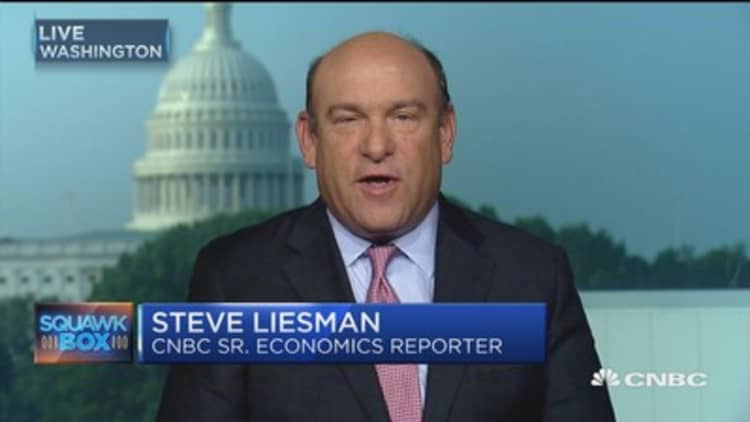The Federal Reserve is set to raise interest rates Wednesday even though one of its stated conditions for doing so is arguing against it.
The central bank has a stated dual mandate when assessing its monetary policy: maximizing employment and stabilizing prices.
What's unusual right now is that the Fed's stimulative policies have appeared to achieve one, with the unemployment rate at a 16-year low of 4.3 percent, but it is failing at the other.
This chart illustrates the dilemma the central bank faces today with its dual mandate:
While the unemployment rate is falling, prices are not stable and are even hinting at disinflation. The pace of core CPI, which excludes volatile food and energy prices, just declined for a fourth straight month, according to a new report out Wednesday morning.
This means Fed chair Janet Yellen has some explaining to do Wednesday at her press conference, following the central bank's expected decision to raise its benchmark interest rate by a quarter point. If they do raise, she'll need to explain why the Fed is hiking when prices are not stable. Raising borrowing costs could cause prices to fall further.
"The basic textbook theory is that unemployment is lower than where it should be normally, and in these circumstances, inflation can gain a foothold if they don't normalize rates," said Chris Rupkey, chief financial economist at MUFG Union Bank. "It's really theory trumping the actual economic data. I know they say they're data dependent. I don't think they're data dependent on inflation."

To be sure, some economists think the Fed is not necessarily "tightening" policy but just normalizing rates. The Fed doesn't really want to slow the economy, but doesn't want to lose the opportunity to return some normalcy to markets while employment is so low.
"We think the main message will continue to be that the improving labor market is likely to justify gradual, but ongoing removal of stimulus," said Jim O'Sullivan, HFE chief economist.
--With reporting by Patti Domm




